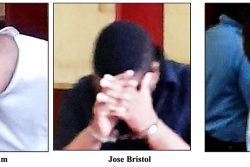Dear Editor,
I write to acknowledge the letter of Mr. Tony Vieira of 9 September, in which he retraced in not so many words, some of the ground I covered in mine of 3 August last, as regards the big trucks outfitted with blinding strobe lights that are terrorizing the public on our roadways; the need for signage on the highways saying “Keep left except when overtaking”, as per our existing law, which is applicable not only to truck drivers but to minibuses and other inconsiderate drivers; and the ignoramuses driving at night on our regular roads with fog lights.
Suffice to say that as I had shared my letter with the authorities, and having seen neither acknowledgement nor response thereto, I am left to speculate as to what store is placed on the provision of free advice from well-meaning, public-spirited citizens like Mr. Vieira and myself. In this regard, lending his voice, as loud as it is, to the crescendo of complaints and concerns raised by the citizenry – is the Guyana Road Safety Association asleep at the wheel, in all this? – is welcome.
Where I part ways with Mr. Vieira however, is as regards his suggestions for increasing fines from $7,500 to $35,000 and introducing a reward system to incentivize police ranks. Because GT’s finest are ‘poorly paid’, as Mr. Vieira states, what frequently transpires now is that when the errant motorist is stopped and the “lef or right” ritual is performed, (s)he escapes the long arm of the law, in addition to the often time-consuming process of forfeiting sometimes a day(s) to attend court, by “passing a granger”. This is a no-brainer win for the motorist, particularly as it is a $2,500 saving on the fine, but the result is a leakage from the revenue stream into the pockets of the police ranks.
Hence increasing the fines by more than 450% would not result in the intended deterrent effect. Indeed, what would be the incentive for ranks to increase arrests, when instead of $5000, $25K could now be paid by the errant motorists to evade prosecution, leading to increased haemorrhaging of funds from the government coffers. In the result, the response of ranks to the reward system would be disappointing; bottom line, traversing our roadways could continue to be compared with a training ground for those who would like to audition for a Fast and Furious movie.
It is submitted that the required cure for the attendant mischief is to eliminate the regrettably corruptible human element from the current traffic arrangements. For so long as the system supports the opportunities for “shakedowns”, we are going nowhere in a hurry. Increasing the fines would likely make things worse if the work conditions of the ranks do not improve, and would not meaningfully reduce traffic violations, in my estimation.
As in more developed societies, particularly in Europe, traffic ranks could concentrate on eliminating traffic congestion – such as we experience in the daily nightmare on Sheriff St, Regent Street, central Georgetown, the Harbour bridge, and the main arteries of the city at rush hour – by leaving speed control to static speed cameras installed not only on our new roads, but throughout our road system, thereby eliminating the hand-held speed guns currently used by these ranks. By employing these automatic cameras, the registered owner of the vehicle would get a rude awakening a few days after the infraction, when (s)he receives a date-stamped photo of the vehicle along with a record of the elevated speed, with a demand to pay the fine within a specified period, or face prosecution. Any legislative amendment necessary to provide for the utilization of the convincing electronic evidence gathered from these cameras to make a conviction, ought not to unduly prolong the introduction of this new dispensation.
An added attraction would be that whereas at present, registered vehicle owners remain in the dark when their employees or friends break the law and “lef something”, the electronic notification would be sent directly to their address. In addition, because Guyanese are “creative” people, the images of speeding motorists produced by cameras would be randomly crossed-checked with the amount of notifications sent out, by a senior officer – a “brown clothes man” as my school mate the late Commissioner Henry Greene would say – to detect any possible corruption among the considerably fewer ranks that would be needed to administer this technology-driven system.
I urge the Ministry of Home Affairs and the Ministry of Finance to collaborate in procuring, with the requisite due diligence, the relevant equipment that would capture images of vehicles being driven above the speed limit. This would address both the traffic violations and make a serious dent in the corruption in the system. The incessant loss of life and man-hours is taking too much of a toll on households and productivity. In addition, the existing Smart City cameras should be activated or repaired. Recently, the circumstances surrounding an accident at a major intersection could not properly be investigated because the cameras are out of service.
This is a low-hanging fruit, a relatively quick win among the various priorities the Government must contend with, that would leave a positive footprint across the length and breadth of the country and make the roadways a safer place and an easier commute.
And finally, what purpose is served by naming and shaming road users with multiple speeding violations over 75 km/h, when among those listed are legal persons that are incapable of driving – companies, a government Ministry and a Corpora-tion!? Does this not discriminate against the natural persons whose identities have been revealed, while the real culprits from these entities get to shelter behind a corporate veil? There are other ways of motivating compliance with the law related to moving violations besides public ridicule, especially where in some circumstances the infraction might have occurred in pursuit of an emergency or a genuine humanitarian cause.
Yours sincerely,
Neville Bissember





